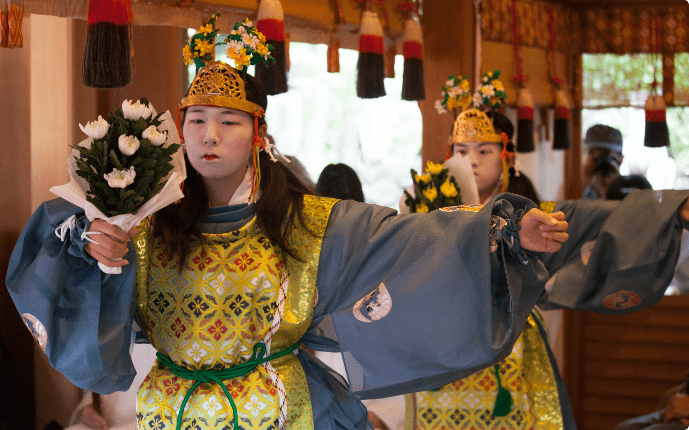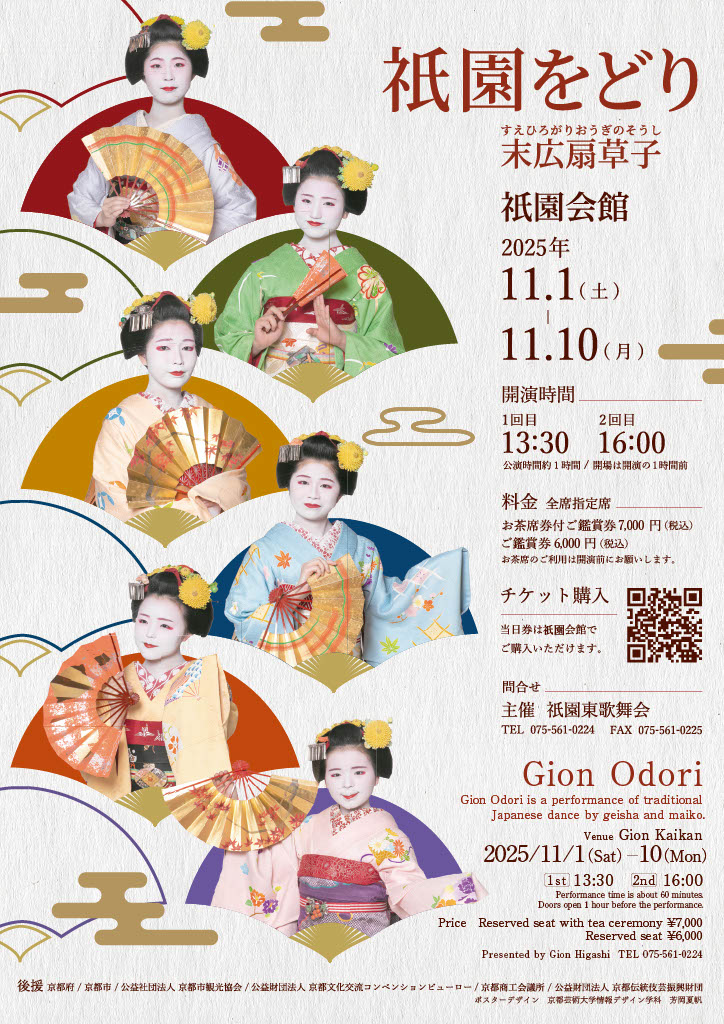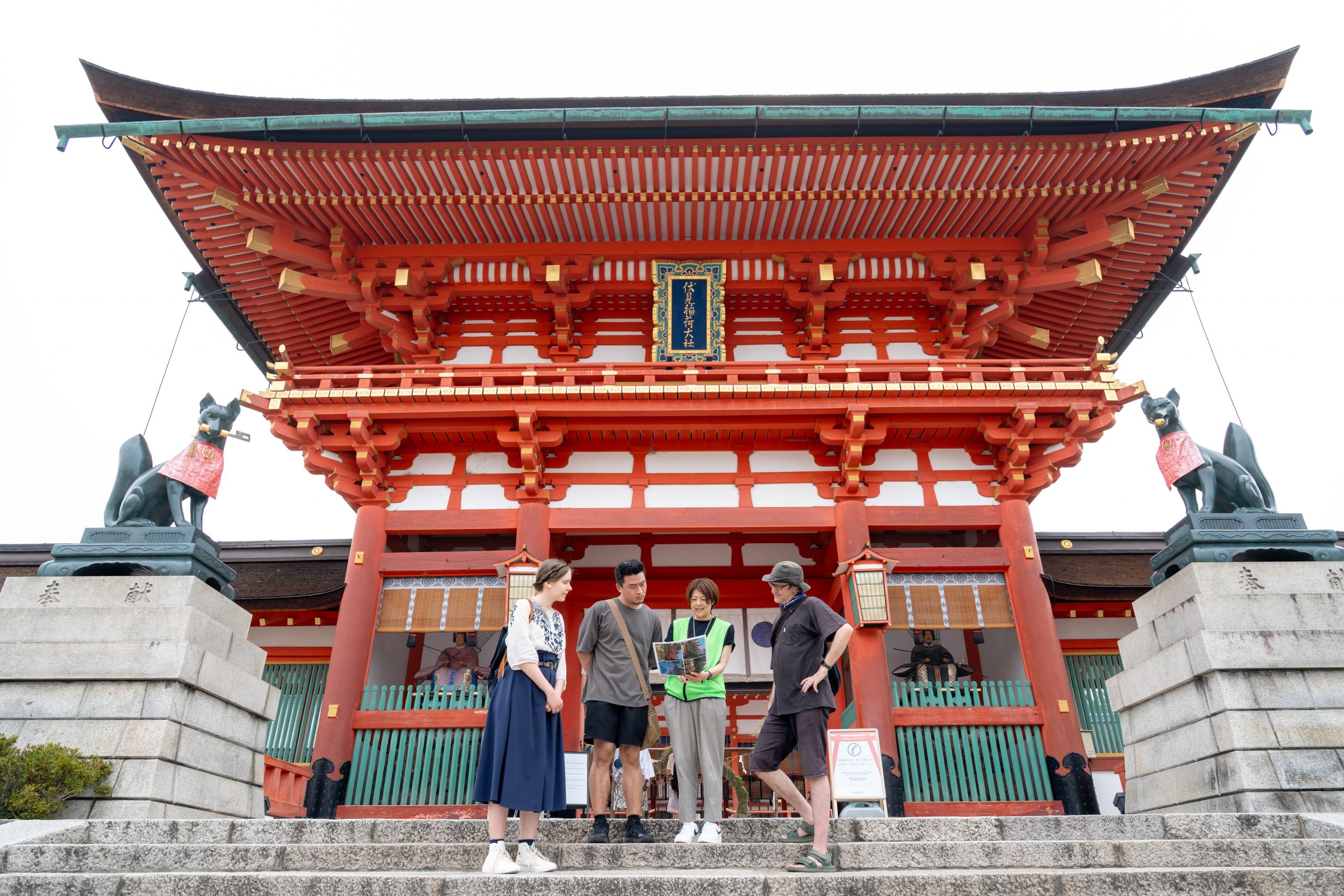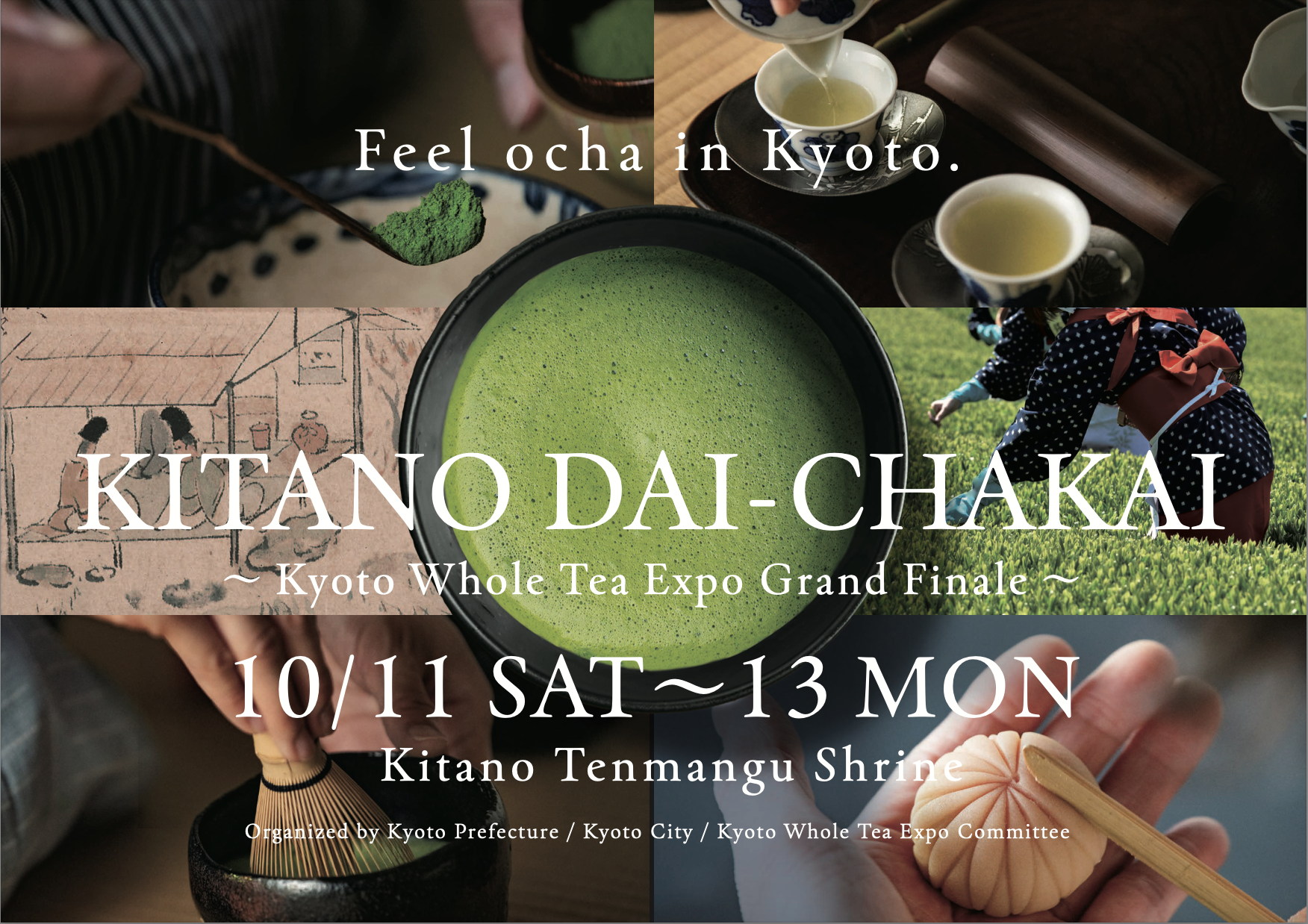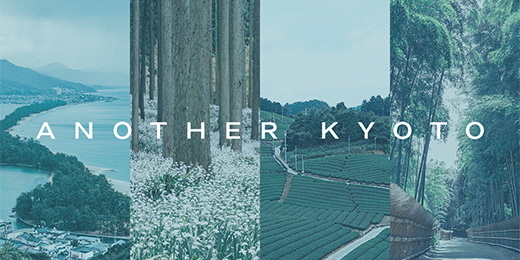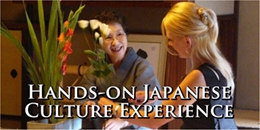The Kyoto Summer Special Openings is a program allowing visits to temples, shrines and other historical buildings of cultural importance in Kyoto City for a limited period during the summer. The program is carried out according to different themes each year.
The theme for 2025 is “Water scapes to visit in summer and modern architecture masterpieces of Kyoto.” In addition, some special evening light-up events will be newly introduced to commemorate the 50th Kyoto Summer Special Openings.
Dates
July 11th (Fri) to September 30th (Tue), 2025
*Some of the locations have different opening periods. Please check the sections of each place for details.
There may also be dates or times of day where public viewing is not possible, due to ceremonial events or weather conditions (typhoon, etc.).
Up-to-date information will be shown on this website, so please check prior to your visit.
Special opening hours
10:00 to 16:30 (last admission 16:00)
*The hours are different for some locations.
Please check the sections of each place for details.
Entrance Fee (per place):
• Adults ¥800
• Age 6-12 ¥400
*Free for children age 5 and below
*The fees are different for some places. Please check the sections for each place for details.
Heat prevention campaign
Spending too much time outside during summer in Kyoto can be dangerous due to the high temperature and humidity. In order to help visitors of the Kyoto Summer Special Openings continue their trip safely and comfortably, a new heat-prevention campaign will be held at a number of locations participating in the event. Cooling goods will be given out and safety tips for summer as well as the “Kyoto Traveler’s Promise” will be promoted. Take part in it and get a chance to win its lottery!
NOTE
During your visit to temples, shrines, etc.; we ask you to please observe the following:
- No smoking
- No drinking or eating
- No photography in some areas. Please follow the instructions of staff at each place when you wish to take photos. Some locations may not allow photography of areas or objects related to religious worship. We ask for your understanding.
- Please unshoulder your backpack/shoulder bag or carry it in front of you in order to protect cultural property. If possible, please check in large pieces of baggage.
- Please refrain from visiting barefoot. (bring socks with you).
- Please do not touch any cultural properties (pictures on partitions, Buddhist statues, etc.).
*Some temples may be closed for Buddhist services without notice.
*On-site guidance is available in Japanese only. English information will be provided in print or digital text.
Details
1. Enshin-dō Hall in the Shōsei-en Garden
2. Goei-dō-mon (Founder’s Hall Gate) of the Higashi Hongan-ji Temple
3. Pontocho Kaburenjo
4. Shozan Hogyokutei
5. Ninna-ji Temple Kannon-do Hall
6. Kamigamo-jinja Shrine Honden (Main Sanctuary) and Gonden (Temporary Sanctuary)
7. Shimogamo-jinja Shrine Honden (Main Sanctuary) and Oidono (Old Sanctuary Kitchen)
8. Old Mitsui Family Shimogamo Villa
9. Ninna-ji Temple Kannon-do Hall (Special Night-time Opening) and Light-up of Temple Precincts
10. World Heritage Site Kamigamo Shrine Summertime Light Display Visit to the Dragon God and Refreshing Evening Footbath
11. Special Summer Night-time Opening of the Old Mitsui Family Shimogamo Villa
Enshin-dō Hall in the Shōsei-en Garden
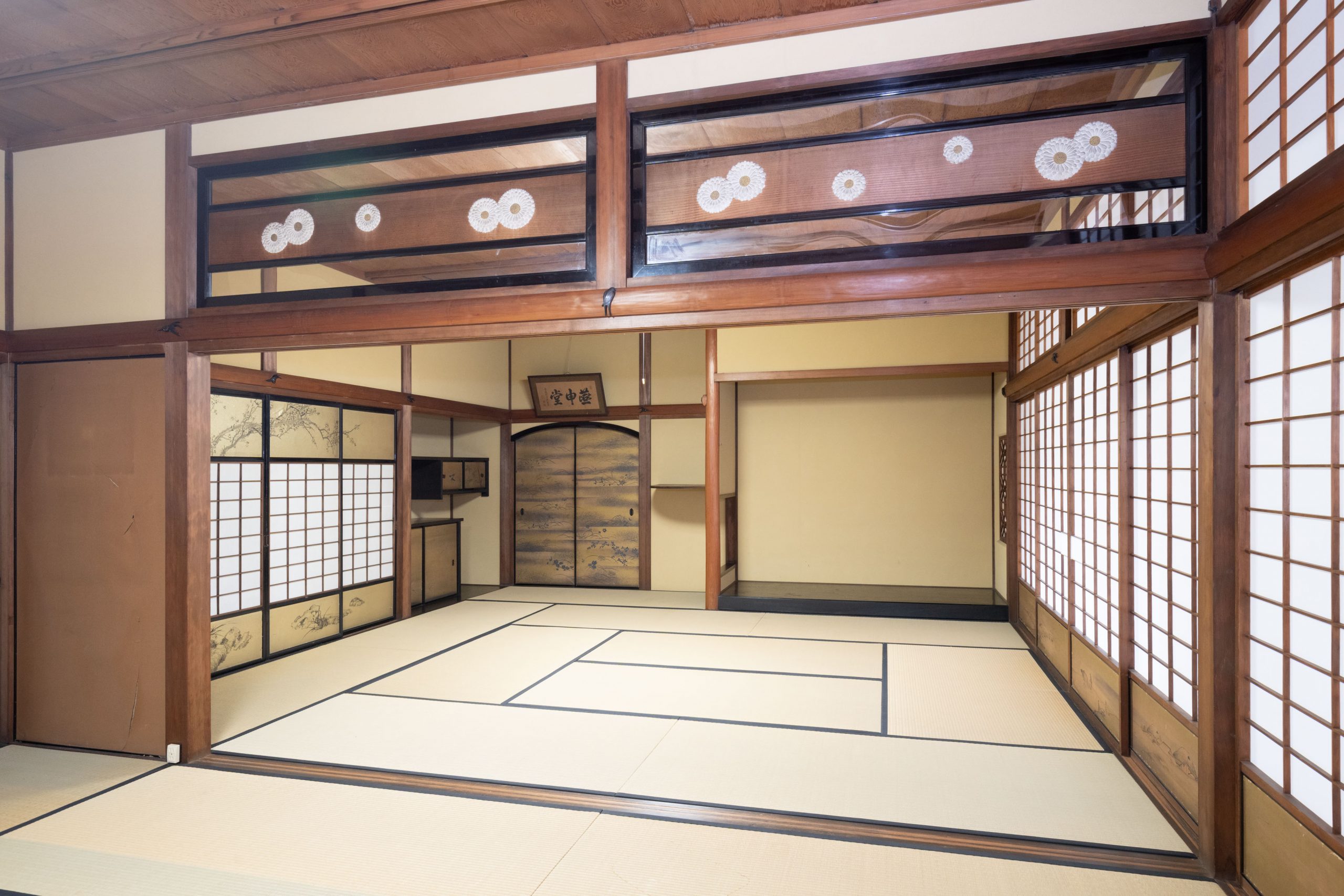
Shosei-en is a large Japanese garden of approximately 35,000 m² in Higashi Hongan-ji Temple, located five minutes by foot from Kyoto Station. This garden was created in the 17th century and is also called “Kikoku-tei,” the term “kikoku” meaning “citrus,” because citrus trees used to grow around it. The interiors of all the buildings around the garden’s pond are normally closed to the public, but the Enshin-do Hall will specially be made open to public for this limited period.
Enshin-do has been the residence of the head of Higashi Hongan-ji for generations and has also been used to welcome important guests, and has never been made open to the public. The structure is made of the highest-quality wood and has a beautiful view of the garden. Its unique feature is its kugi-kakushi (decorative nail head covers), which are made of silver in the form of swallows, each with a different shape.
| Dates | July 11th (Fri) to September 30th (Tue) 2025 |
| Hours | 10:00 – 16:30 (Admission until 16:00) *Please enter through the general admission entrance by 15:45. |
| Admission Fee | Admission: Adults ¥500 ・Age 6-12 ¥250 *An additional fee (contribution to garden maintenance) will be required upon admission into Shosei-en Garden: Adults ¥700 ・Ages 13-18 ¥300 ・Free for children of age 12 and below |
| Access | From Kyoto Station: ● 10-minute walk from Kyoto Station. ● City Subway Karasuma Line to Gojo Station. 7-minute walk from the station. |
Goei-dō-mon (Founder’s Hall Gate) of the Higashi Hongan-ji Temple
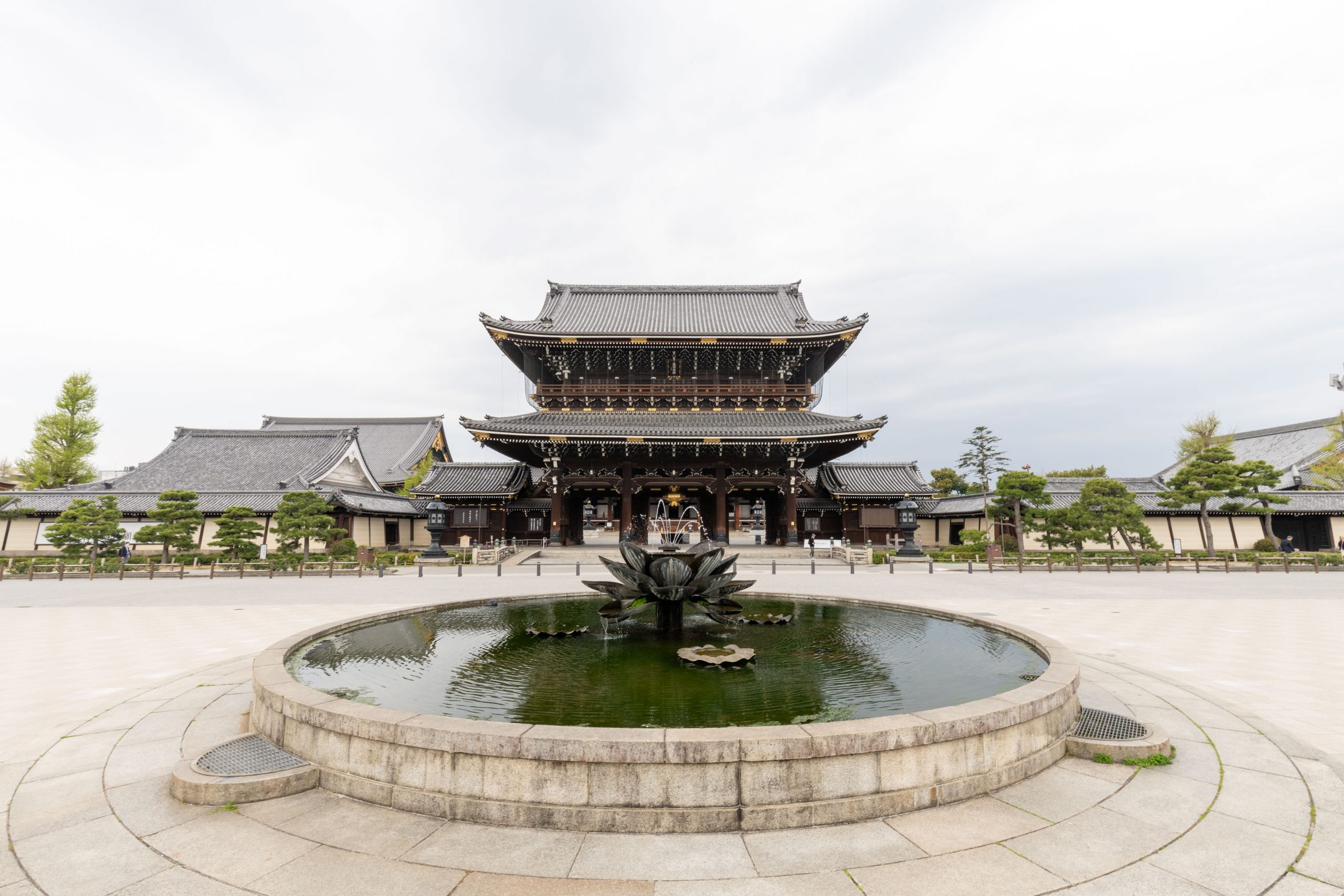
Higashi Hongan-ji is a large temple with extensive premises, conveniently located five minutes by foot from Kyoto Station. In its center stands Goei-do (Founder’s Hall), which is seventy-six meters long from side to side, fifty-eight meters from front to back, and thirty-eight meters tall, making it one of the largest wooden structures in the world.
Its gate, the Goei-do-mon, rises about twenty-seven meters above ground, making it the tallest wooden temple gate in Japan. The second-story portion of this gate, which offers a splendid view of the city and its eastern mountains, will specially be made open to public during this limited period.
Three Buddhist images: a seated Shaka Nyorai (Shakyamuni), a Miroku Bosatsu (Maitreya-nātha), and an Anan Sonja (Ānanda) are enshrined in the second story, and there is a lotus flower-shaped fountain out at the front.
| Dates | July 11th (Fri) to September 30th (Tue) 2025 |
| Hours | 10:00 – 16:30 (Admission until 16:00) |
| Admission Fee | Adults ¥800 ・Age 6-12 ¥400 |
| Access | From Kyoto Station: ● 7 minutes walk from the station. ● City Subway Karasuma Line to Gojo Station. 5-minute walk from the station. |
Pontocho Kaburenjo
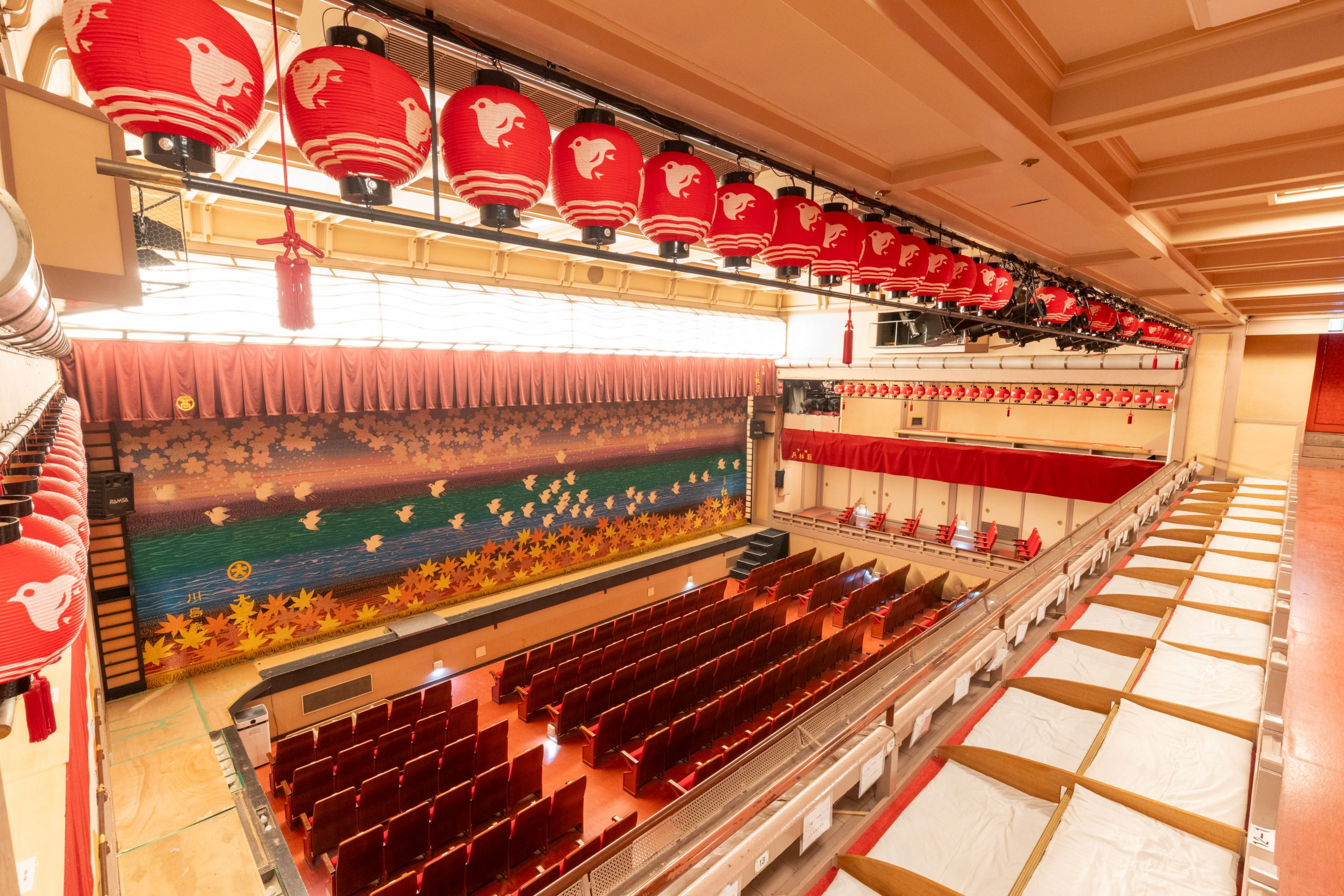
The Pontocho Kaburenjo is a theater showing dances performed by geiko and maiko, notably the Kamogawa Odori, which is a famous dance performed every year in May with a history of more than a hundred and fifty years.
This theater of Pontocho, one of Kyoto’s five historical entertainment districts, was completed in 1927 and praised at the time for its “modern style of architecture incorporating Eastern aesthetics.” The upper portion of its outer walls is covered with Western-style scratch tiles, while the lower portion resembles the Namako wall style used in traditional Japanese storehouses, and the roof is decorated with onigawara (ornamental roof tiles believed to have talismanic properties against evil spirits and fire) representing a mask used in a dance based on the story of the Prince of Lang Ling in ancient China.
During the Kyoto Summer Special Openings, aside from the stage and the auditorium, visitors will also be able to view parts of this theater that are normally closed to the public, such as the backstage and a room used by geiko and maiko for rehearsals.
| Dates | July 14th (Fri) to September 30th (Tue) 2025 *Closed to the public on September 3rd (Wed) and from the 11th (Thu) to the 15th (Mon). |
| Hours | 10:00 – 16:30 (Admission until 16:00) *A group tour will begin every 15 to 20 minutes. It will be led in spoken Japanese, and a written explanation in English will be provided. *Geiko or maiko may be present in the building, wearing their everyday outfits. Please do not take photos of them. |
| Admission Fee | Adults ¥800 ・Age 6-12 ¥400 |
| Access | From Kyoto Station: ● City Bus No.4, No.5, No.7, or No.205 to Kawaramachi Sanjo. 5-minute walk from the bus stop. ● City Subway Karasuma Line to Karasuma Oike Station. Transfer to Tozai Line to Sanjo Keihan Station. Exit from Exit No.6. 5-minute walk from the station. |
Shozan Hogyokutei
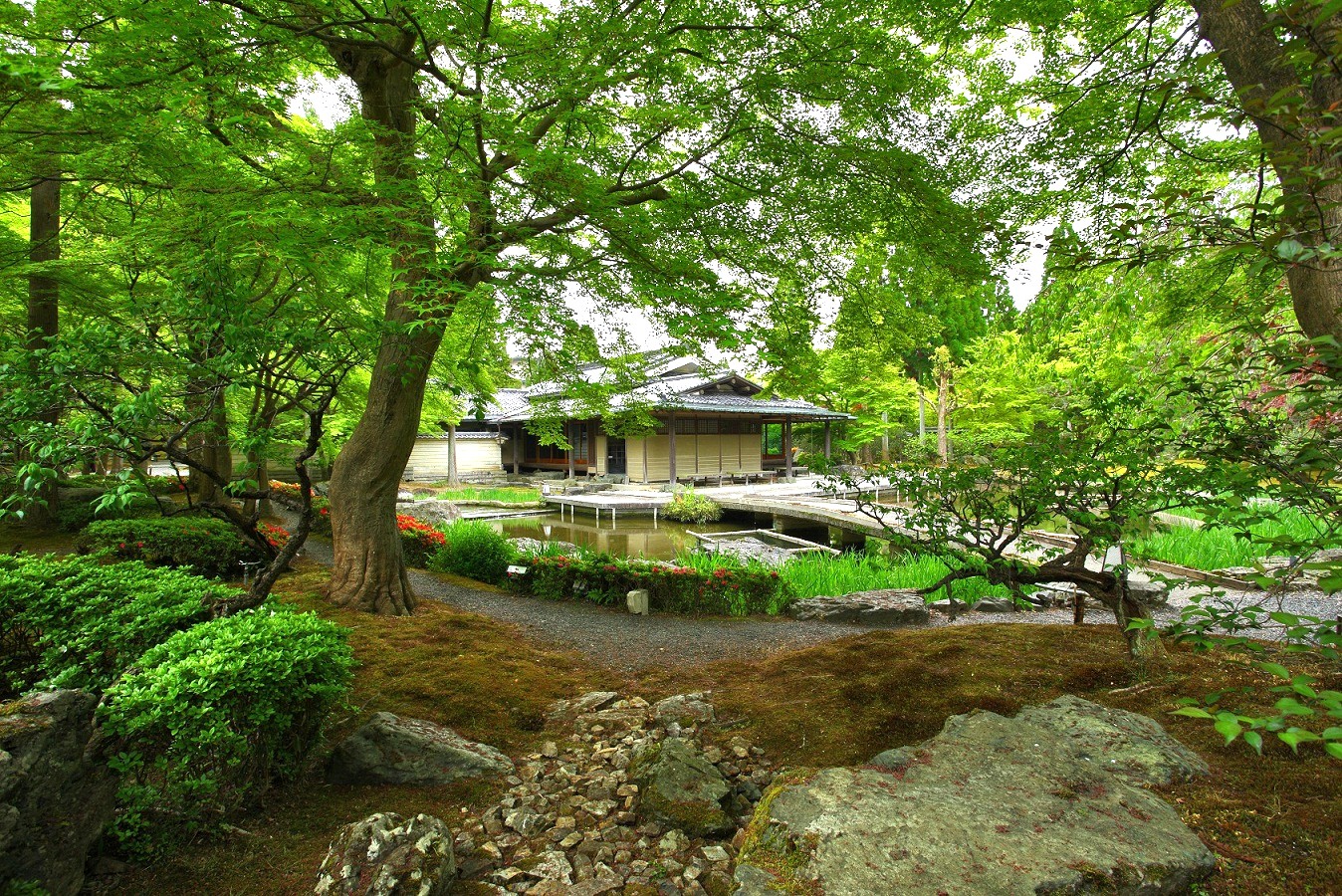
Shozan, located by Takagamine, a hill in the northern part of Kyoto City, is a spacious complex of several restaurants and a Japanese garden. It was created by a merchant of Nishijin-ori, traditional textiles of Kyoto.
The Japanese garden is a beautiful moss-covered garden with five hundred year old Kitayama cedar trees and a stream. In its center stands Hogyoku-tei, a Japanese-style house built about seventy years ago using a lot of highest-quality Kitayama cedar, bamboo, and Japanese zelkova. A particularly unique feature of this structure is its columns made of nandina. Nandina, also known as sacred bamboo, is a shrub that typically has thin stems. Stems as thick as these are rare. In addition, the rooms are decorated with many paintings collected by Shozan’s founder, and these include a painting of a crane by an artist of the Kano School of Japanese painting and a painting by Takeuchi Seihō, a famous Nihonga artist.
Hogyokutei used to be used as a place to exhibit obi for kimono, have business negotiations, and entertain guests.
| Dates | July 11th (Fri) to September 30th (Tue) 2025 *Closed to the public from 12:00 (admission until 11:30) on September 6th (Sat) |
| Hours | 10:00 – 16:30 (Admission until 16:00) *A Japanese-language tour will begin every 15 to 20 minutes. |
| Admission Fee | Adults ¥800 ・Age 6-12 ¥400 |
| Access | From Kyoto Station: ● City Subway Karasuma Line to Kitaoji Station. Transfer to City Bus No.North1 to Dotenjo-cho. 5-minute walk from the bus stop. |
Ninna-ji Temple Kannon-do Hall
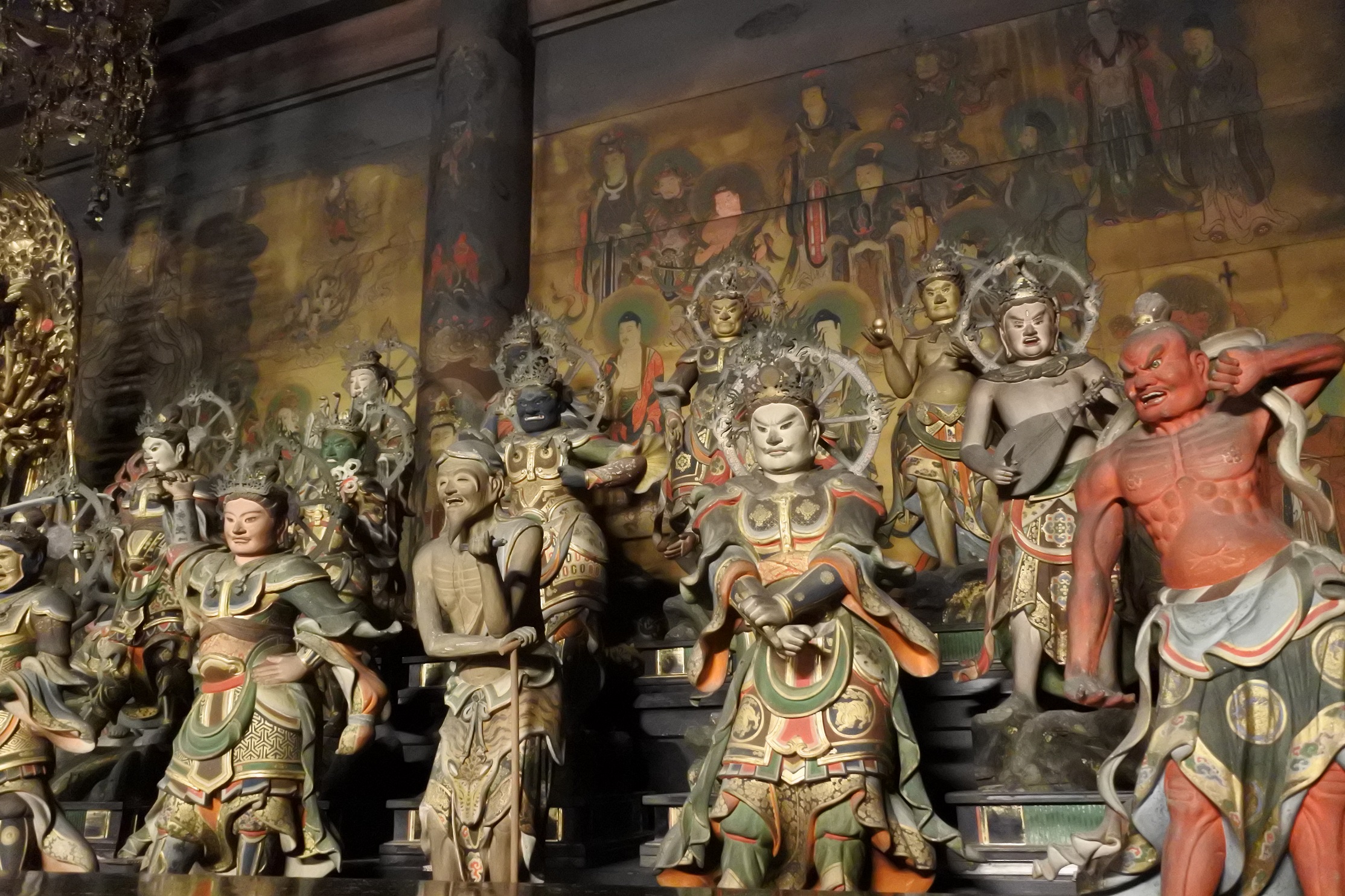
Ninna-ji Temple was founded in 888 CE, and it has been designated as a UNESCO World Heritage site. It is a prestigious temple, as many generations of its abbots were members of the Imperial Family.
The Kannon-do, an Important Cultural Property, which will specially be made open to public, is a hall that was built in 1644 and is where the most important ceremonies of Ninna-ji Temple are held. Its inner walls and columns are illustrated with vivid colors that have been well preserved for approximately 380 years since the time the hall was built, thanks to the fact that the doors of this hall have been generally shut, as the hall has been closed to the public, protecting the murals from being exposed to sunlight. On the altar are thirty-three Buddhist images; including the principal image that is the Senju Kannon (Thousand-Armed Kannon) as well as Fudo Myo-o (Acala), the Twenty-Eight Guardian Deities, Fujin (wind god), and Raijin (thunder god); creating a solemn atmosphere that is breathtaking.
| Dates | July 11th (Fri) to September 30th (Tue) 2025 *Closed on July 18th (Fri), August 18th (Mon), and September 18th (Thu). |
| Hours | 10:00 – 16:30 (Admission until 16:00) *A Japanese-language tour, guided by a priest, will begin every 30 minutes. |
| Admission Fee | Adults ¥700・Free for persons age 18 and below |
| Access | From Kyoto Station or from the JR Sagano Line’s Enmachi Station: ● City Bus No. 26 or JR Bus to Omuro-Ninnaji. From Kyoto Station: ● JR Sagano Line to Uzumasa Station. Transfer to Keifuku Line (Randen) from Satsueijo-mae Station to Omuro-Ninnaji Station. 3-minute walk from the station. |
Kamigamo-jinja Shrine Honden (Main Sanctuary) and Gonden (Temporary Sanctuary)
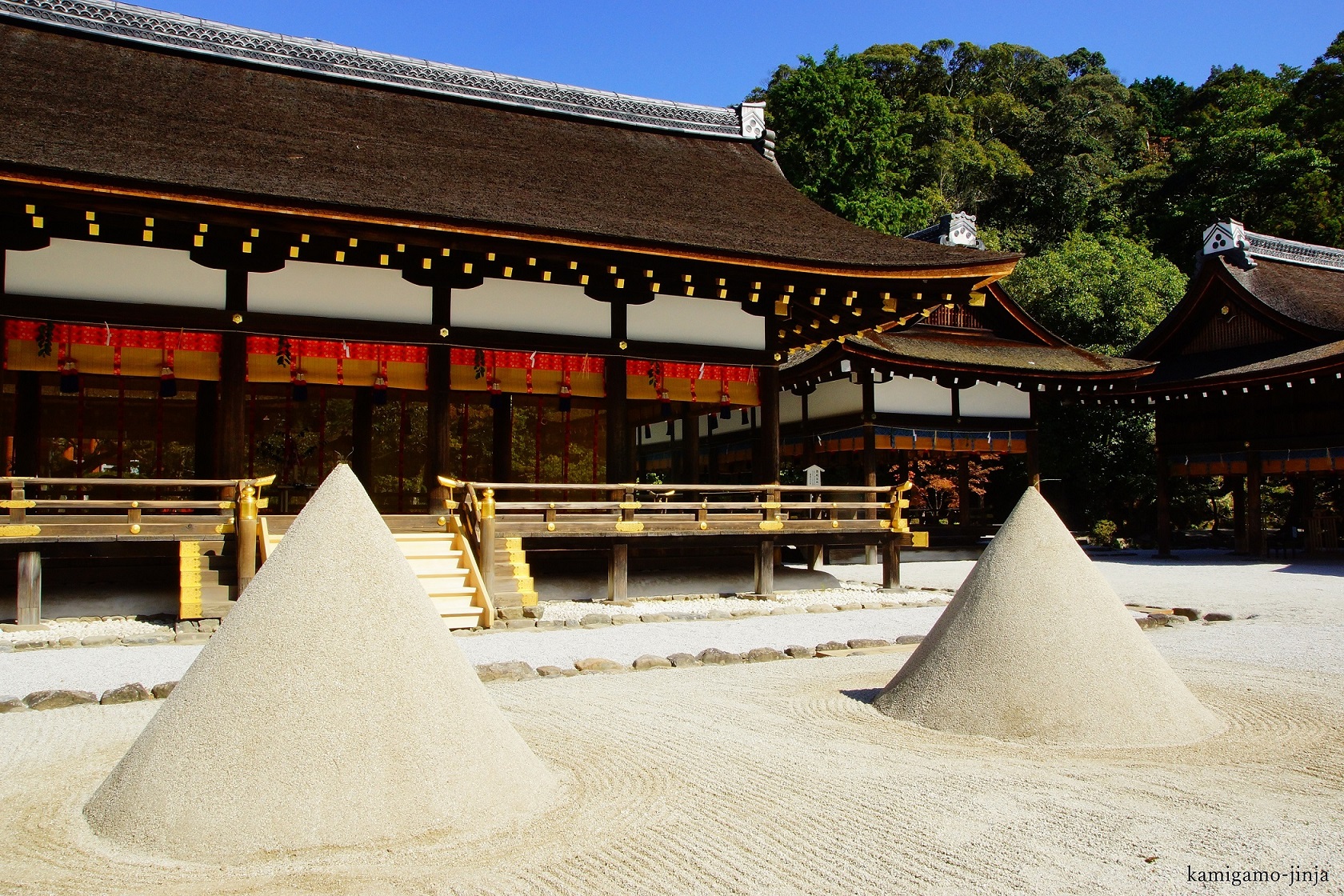
Kamo Wakeikazuchi Jinja Shrine, commonly known as Kamigamo-jinja Shrine, is dedicated to the deity Kamo-Wakeikazuchi-no-Ōkami. It has two buildings registered as National Treasures and forty-one Important Cultural Properties, and its extensive shrine grounds are registered as a UNESCO World Heritage site.
Kamo-Wakeikazuchi-no-Ōkami is believed to have descended on Mt. Kōyama to the north of the shrine in ancient times when deities ruled Japan. It is said that a shrine building dedicated to this deity already existed here by 677 CE. Kamigamo-jinja is therefore considered the oldest shrine in Kyoto.
As is not uncommon among old shrines in Japan, this shrine has followed a system called shikinen sengū, which is a ritual reconstruction of the shrine buildings carried out once in a certain number of years. The shikinen sengū at Kamigamo Jinja takes place every twenty-one years, and today this involves repairs and maintenance on the shrine buildings without complete reconstruction, in order to preserve the current buildings, which are designated as National Treasures and Important Cultural Properties. The last shikinen sengū at Kamigamo Jinja was in 2015, and the next is to be in 2036. The current Honden (Main Sanctuary) building was built in 1863 and has been maintained since then. When work is to be carried out on the Honden during the shikinen sengū period, the deity is symbolically transferred to an almost identical building, the Gonden. Both buildings are designated as National Treasures.
The area including the Honden and the Gonden is called “Naitei” and is a sanctuary normally closed to the public, but a Shinto priest will guide visitors into this area during this special opening period. The roofs of both the Honden and the Gonden are thatched by layering the bark of hinoki cypress. This is a traditional thatching method called “hiwada-buki” that is unique to Japan.
Kamigamo Jinja is considered an excellent power-spot to pray for matchmaking, romantic fulfilment, preventing misfortune, and good health.
| Dates | July 11th (Fri) to September 30th (Tue) 2025 *Closed on 16th, 17th, and 18th of July. *On September 1st (Mon), 9th (Tue) and 24th (Wed), the admissions begin at 13:00. On September 2nd (Tue), the admissions end at 13:00 (gates close at 13:30). On September 3rd, the admissions end at 13:30 (gates close at 14:00). On September 26th (Fri) and 27th (Sat), the admissions end at 12:30 (gates close at 13:00). |
| Hours | 10:00 – 16:30 (Admission until 16:00) |
| Admission Fee | Adults ¥800 ・Age 6-12 ¥400 |
| Access | From Kyoto Station: ● City Bus No.4 to Kamigamo Jinja-mae. |
Shimogamo-jinja Shrine Honden (Main Sanctuary) and Oidono (Old Sanctuary Kitchen)
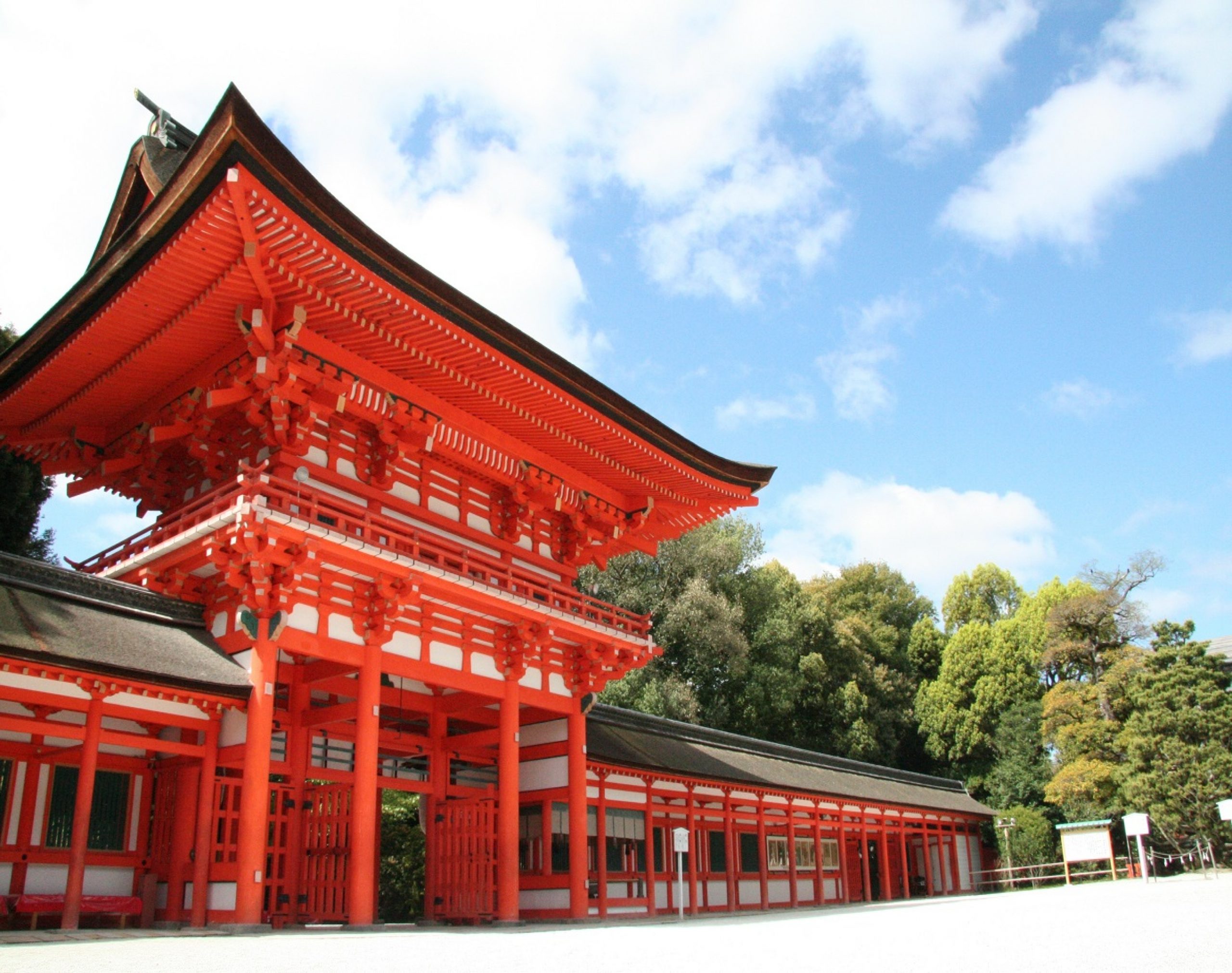
Kamo-Mioya-Jinja, commonly known as Shimogamo-jinja Shrine, has two buildings registered as National Treasures and fifty-three Important Cultural Properties, and the extensive shrine grounds are a UNESCO World Heritage Site. It is believed to be one of the oldest shrines in Kyoto along with Kamigamo Jinja. In particular, the shrine has a primeval forest with about six hundred trees–chiefly broadleaved trees such as Japanese zelkova, hackberry, and muku elm–with ages ranging from two hundred to six hundred years old. This forest retains largely the same composition of flora since the third century BC, making it a highly valued place from the perspective of forest ecology and environmental science.
Like Kamigamo Jinja, Shimogamo Jinja follows the shikinen sengū system of ritual reconstruction attended by transferring the deity once in a certain number of years. The shikinen sengū at Shimogamo Jinja takes place every twenty-one years, and this involves repairs without complete reconstruction, in order to preserve the current shrine buildings, which are designated as National Treasures and Important Cultural Properties.
Shimogamo Jinja has two Honden (main sanctuary) buildings, which are dedicated to the deities Kamo-Taketsunumi-no-Mikoto and Tamayorihime-no-Mikoto respectively. The current buildings were built in 1863 and have been repaired through shikinen sengū ever since. They are both designated as National Treasures.
During the special opening period, you can enter a special area to view the Honden buildings closer. From here you can have a good view of the roofs of the Honden buildings that are thatched using the traditional “hiwada-buki” cypress-bark thatching method unique to Japan. In addition, you can visit the Ōidono hall, which serves as the traditional preparation site (kitchen) for religious offerings of meals to the deities.
| Dates | July 11th (Fri) to September 30th (Tue) 2025 |
| Hours | 10:00 – 16:30 (Admission until 16:00) |
| Admission Fee | Adults ¥800 ・Age 6-12 ¥400 |
| Access | ● From Kyoto Station: City Bus No.4 or No.205 to Shimogamo Jinja-mae. ● From JR Nara Line Tofuku-ji Station: Keihan Line to Demachiyanagi Station. 12-minute walk from the station. |
Old Mitsui Family Shimogamo Villa
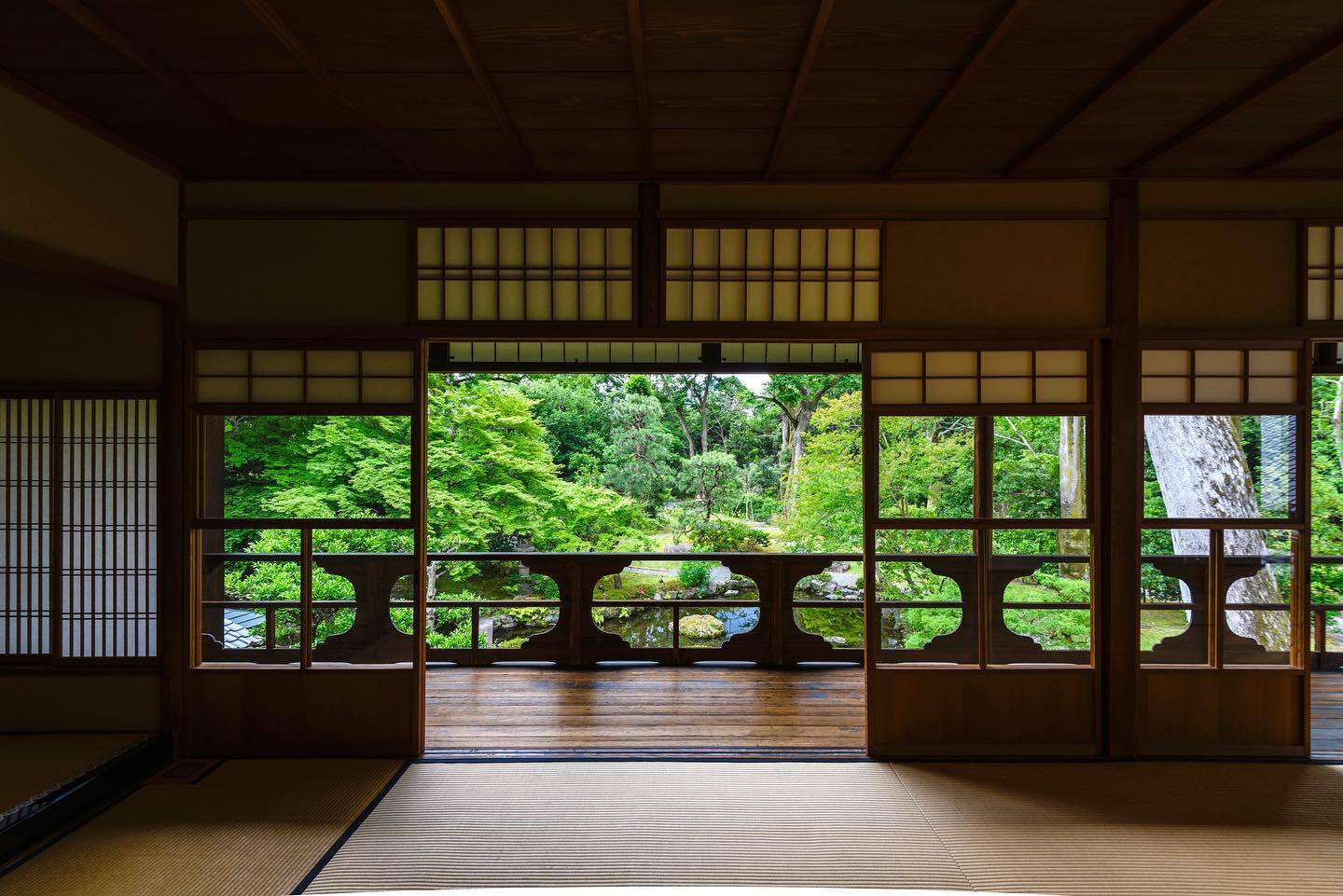
The Old Mitsui Family Shimogamo Villa is a building that used to belong to the Mitsui family, a prominent merchant family in Japan. The family had built a shrine dedicated to their ancestors on this site in 1909. They needed a place to stay when visiting the shrine and thus commissioned this large residence in 1925. The villa was transferred to the state in 1949, becoming government property, and it served as the housing of the chief of the Kyoto Family Court from 1951 to 2007. The buildings have been maintained in excellent condition and are highly valued as a fine example of large-scale traditional Japanese residences. The villa was designated as an Important Cultural Property in 2011.
■Main Building
The main building was originally built in 1880 as a part of another villa belonging to the Mitsui family before it was relocated here. Having a garden on its south side, this building has a splendid, open atmosphere. There is a watchtower on the third floor, offering a stunning view of the Kamo-gawa River and the city’s eastern mountains. This building is also considered a structural highlight in the overall design of the garden.
During the special opening period, you can visit the second floor, which is normally closed to the public and has a beautiful view of the garden.
*The third floor will remain closed to the public.
■Entrance Hall
The entrance hall section was added when the main building was relocated here. The architectural plan follows the traditional Japanese Shoin-zukuri style, but the ceiling is high and the interior has Western-style furnishings such as carpets, tables, and chairs.
■Garden
The moss garden in front of the building is beautifully tended. On the south side is a gourd-shape pond that draws water from Izumi-gawa Stream.
| Dates | August 29th (Fri) to September 7th (Sun) 2025 *The building’s first floor and the garden are open to the public all through the year (closed Wednesdays). |
| Hours | 9:00 – 17:00 (Admission until 16:30) |
| Admission Fee | Adults ¥800 ・Age 6-12 ¥400 |
| Access | ● From Kyoto Station: City Bus No.205 to Aoibashi Nishizume. 5-minute walk from the bus stop. OR City Bus No.4 or No.17 to Demachiyanagi Station. 5-minute walk from the bus stop. ● From JR Nara Line Tofuku-ji Station: Transfer to Keihan Line to Demachiyanagi Station. 5-minute walk from the station. |
Ninna-ji Temple Kannon-do Hall (Special Night-time Opening) and Light-up of Temple Precincts
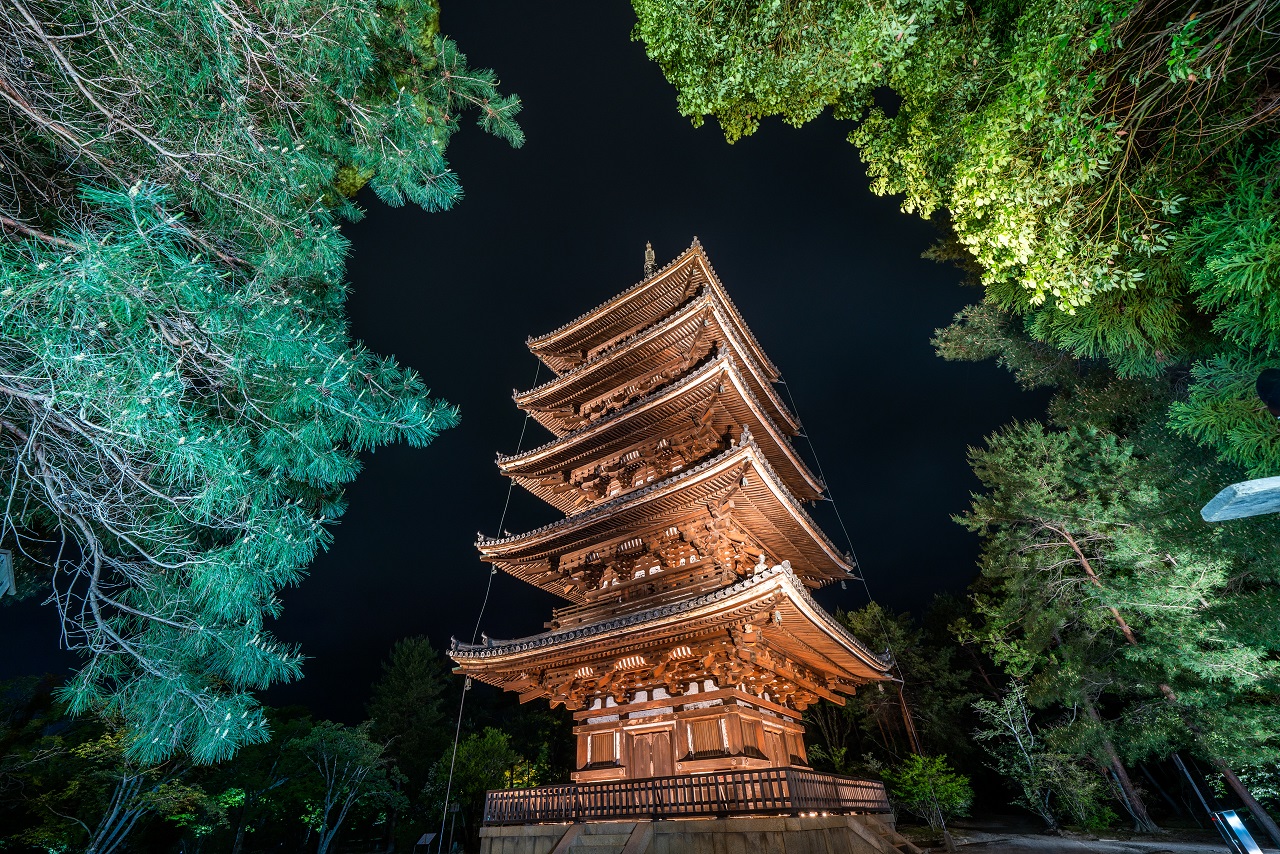
【Special feature of the 50th Kyoto Summer Special Openings: Summer evening light-ups】
The quiet precincts of the UNESCO World Heritage Site Ninna-ji Temple will be lit up after the Temple’s usual closing time for a limited period of eleven days. The exteriors of the five-story pagoda and the Kon-do, which is the main hall, will be beautifully lit up in the spacious temple grounds. In addition, the interior of the Kannon-do, normally closed to the public, will specially be made accessible after dark. Inside are thirty-three Buddhist images, and the murals on the walls and columns that are well preserved retain vivid colors from the time they were painted approximately 380 years ago.
| Dates | July 11th (Fri) to 21st (Mon) 2025 |
| Hours | 18:30 – 21:00 (Admission from 18:00 until 20:30) |
| Admission Fee | Adults ¥1,700・Free for persons age 18 and below |
| Access | From Kyoto Station: ●JR Sagano Line to Enmachi Station. Transfer to City Bus No.26 or JR Bus to Omuro-Ninnaji. ●From Kyoto Station, take the JR Sagano Line to Uzumasa Station, and take the Keifuku Line (Randen) from Satsueijo-mae Station to Omuro-Ninnaji Station. 3-minute walk from the station. |
World Heritage Site Kamigamo Shrine Summertime Light Display Visit to the Dragon God and Refreshing Evening Footbath

【Special feature of the 50th Kyoto Summer Special Openings: Summer evening light-ups】
The UNESCO World Heritage site Kamigamo-jinja Shrine will be lit up at night for a limited period of ten days as well. Every year, the fourth Sunday of July is the Mizumatsuri (Water Festival) where people thank the Dragon God of Water and pray to safely get through the severe heat of summer. During this year’s Summer Special Openings, evening visits to the shrine dedicated to this dragon god will be specially allowed for ten days preceding the festival. Visitors will be able to cool their feet in the Nara-no-Ogawa Stream running through the shrine while over a thousand windchimes strung up across the shrine grounds tinkle in the summer breeze as the shrine is illuminated in cool blues and greens, and watch a mystical dance performed by shrine maidens and a musical performance using the shinobue flute.
The Koyama Yusui Coffee stand, which uses the pure spring water from Mt. Koyama, the mountain where the shrine’s deity is believed to have descended, will also be open for extended hours during this period leading up to the Water Festival. From bean-selection to blending and roasting, their coffee is carefully made to complement the excellent quality of the spring water of Mt. Koyama.
Advisory:
*The shrine and its precincts will be dark at night, so please watch your steps.
*To those intending to take a footbath in the stream:
• Footbathing may not be allowed if the water level of the stream is too high.
• Please do not enter the stream with bare feet. Instead, please use the footwear provided on site or bring sandals, etc., that can be used to step into water.
• It is recommended to bring a towel, etc., so that you can dry your feet after footbathing.
| Dates | July 14th (Mon) to 23rd (Thu) 2025 |
| Hours | 18:30 – 21:00 (Admission from 18:00 until 20:30) |
| Admission Fee | Adults ¥1,200 ・Age 6-12 ¥600 |
| Access | From Kyoto Station: ● City Bus No.4 to Kamigamo Jinja-mae. ● City Bus No.9 to Kamigamo Misonobashi. 5-minute walk from the bus stop. |
Special Summer Night-time Opening of the Old Mitsui Family Shimogamo Villa
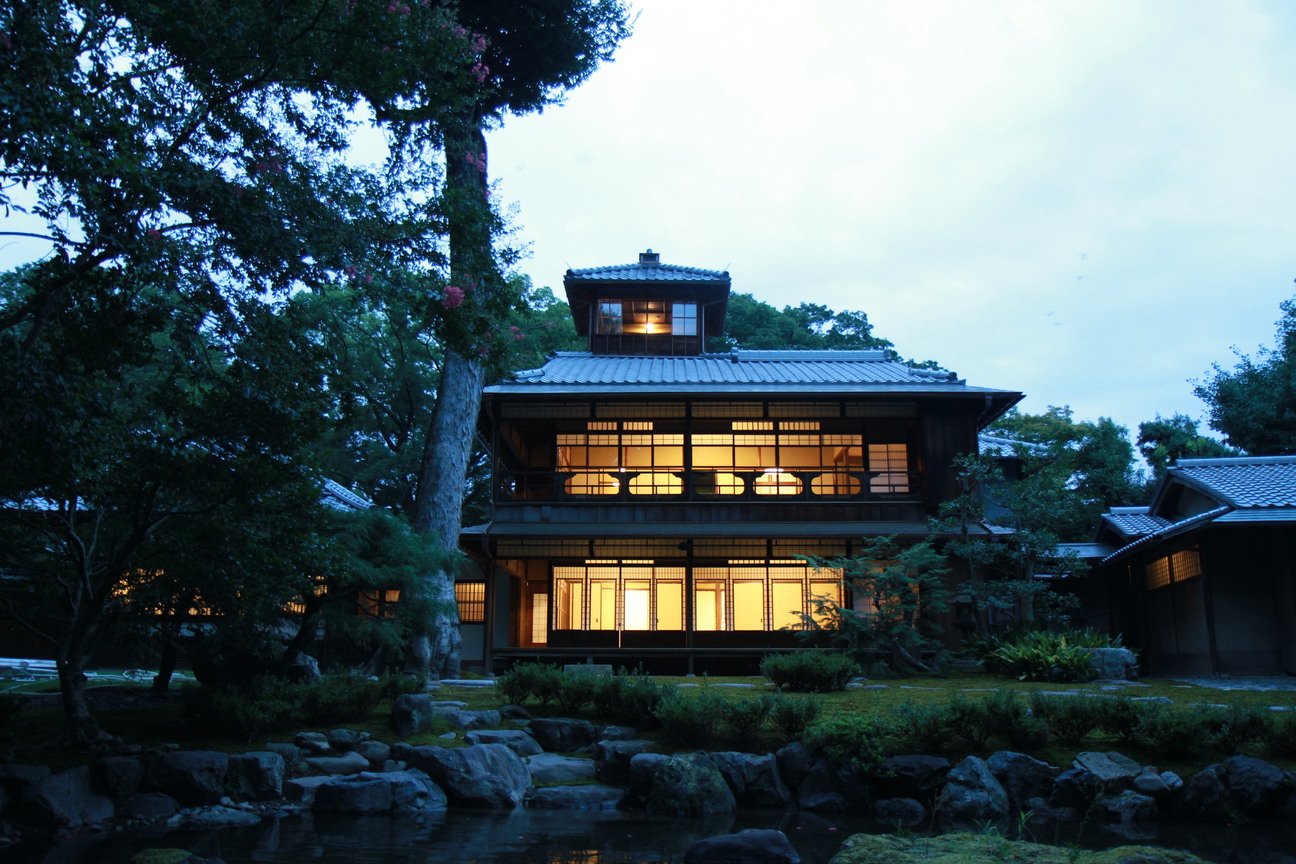
【Special feature of the 50th Kyoto Summer Special Openings: Summer evening light-ups】
The Villa will be lit up from around sunset, allowing visitors to enjoy the cool of the evening while viewing the garden from an open corridor or a garden bench with a refreshing, cold drink in hand at this traditional Japanese style villa designated as an Important Cultural Property.
| Dates | July 18th (Fri) to 21st (Mon), and 25th (Fri) to 27th (Sun) 2025 |
| Hours | 17:30 – 20:30 (Admission until 20:00) |
| Admission Fee | First floor: Adults ¥1,200 Age 13-18 ¥600 (one drink included) Second floor: Adults ¥1,800 Age 13-18 ¥900 (one drink included) *Free for children of age 12 and below. |
| Access | ● From Kyoto Station: City Bus No.205 to Aoibashi Nishizume. 5-minute walk from the bus stop. OR City Bus No.4 or No.17 to Demachiyanagi Station; 5-minute walk from the bus stop. ● From JR Nara Line Tofuku-ji Station: Transfer to Keihan Line to Demachiyanagi Station. 5-minute walk from the station. |


